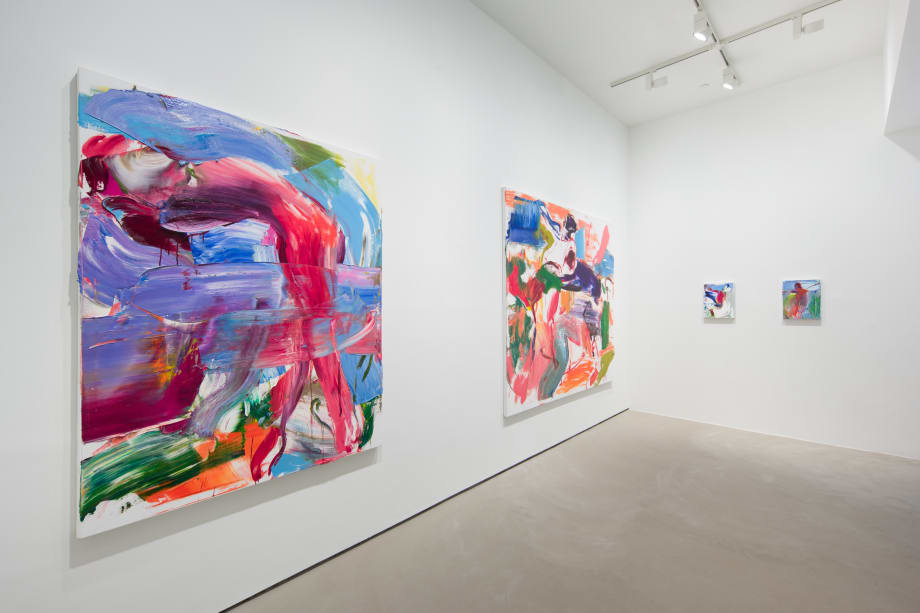Sebastian Hosu was born in 1988 in Satu Mare, Romania. He studied at the University of Art and Design (UAD) in Cluj-Napoca and at the Accademia Albertina di Belle Art in Turin. After university, he continued his studies with Master’s degrees at the Royal Academy of Fine Arts in Liège and the Academy of Fine Arts (HGB) in Leipzig. His current studio is located in Leipzig at the Leipziger Baumwollspinnerei, an old cotton-spinning factory that is considered one of the most important centres of contemporary art in Germany.
As a starting point for creating his images, Hosu often uses self-made recordings from his own family albums which capture moments like summer walks in the woods, sports events or trips with friends. However, according to the artist, the basic reference of his art is almost exclusively the relationship between figures and landscapes (natural space). He is interested in the magical moment when afigure moving in the landscape becomes almost one with the natural space and seemingly dissolves into its surrounding environment. Hosu strives to represent and express this endless fusion of figures and landscapes. In his compositions, figures and landscapes not only merge, but also enter into a symbiotic relationship with each other where the existence of one is unimaginable without the other.
The vigorous brushstrokes of his canvases and the fiercely bold lines of his charcoal drawings oscillate subtly on the border between representational realism and abstract depiction. His monumental figures - sometimes alone, sometimes in pairs or larger groups - become part of the landscape that surrounds them. A sense of space is created by the "horizon landscape" that remains compositionally recognizable in almost all of Hosu's paintings. This "horizon landscape" divides the canvas into upper and lower halves. The luminous blue above and the lush green below sensitively evoke the beautiful blue skies and the rich green forests, meadows or fields, respectively. By applying thick layers of paint, the chromatic landscape referencesare just as visually exciting as the way in which Hosu’s figures dissolve into their surrounding environment.
This exhibition showcases Hosu’s latest body of work, which can be divided into three groups in terms of both composition and technique. For his oil paintings, Hosu classifies them into two groups regardless of their size.
The first group follows a compositional principle of the "horizon landscape,” which divides the canvas into two halves. In the second group, Hosu takes abstraction to the extreme and merely marks the space and the dissolving figures with gestures of allusion. The third and last group are the charcoal drawings which were made in parallel to the paintings to complement them. For Hosu, the charcoal drawings are an extremely important medium of formulation and expression. He considers the charcoal paintings to be as important as the oil paintings for the exhibition.
Hosu's paintings bring to life the entire genealogy and toolset of the history of European landscape painting during the 19th and 20th centuries. The artist not only seeks to explore the role that natural space can play in artistic expression, but he is also equally concerned with the historical significance of figuration in painting. His works attempt to dissolve the hierarchy of genres that has been fossilised over the centuries between figurative and landscape art.
— Mónika Zsikla

